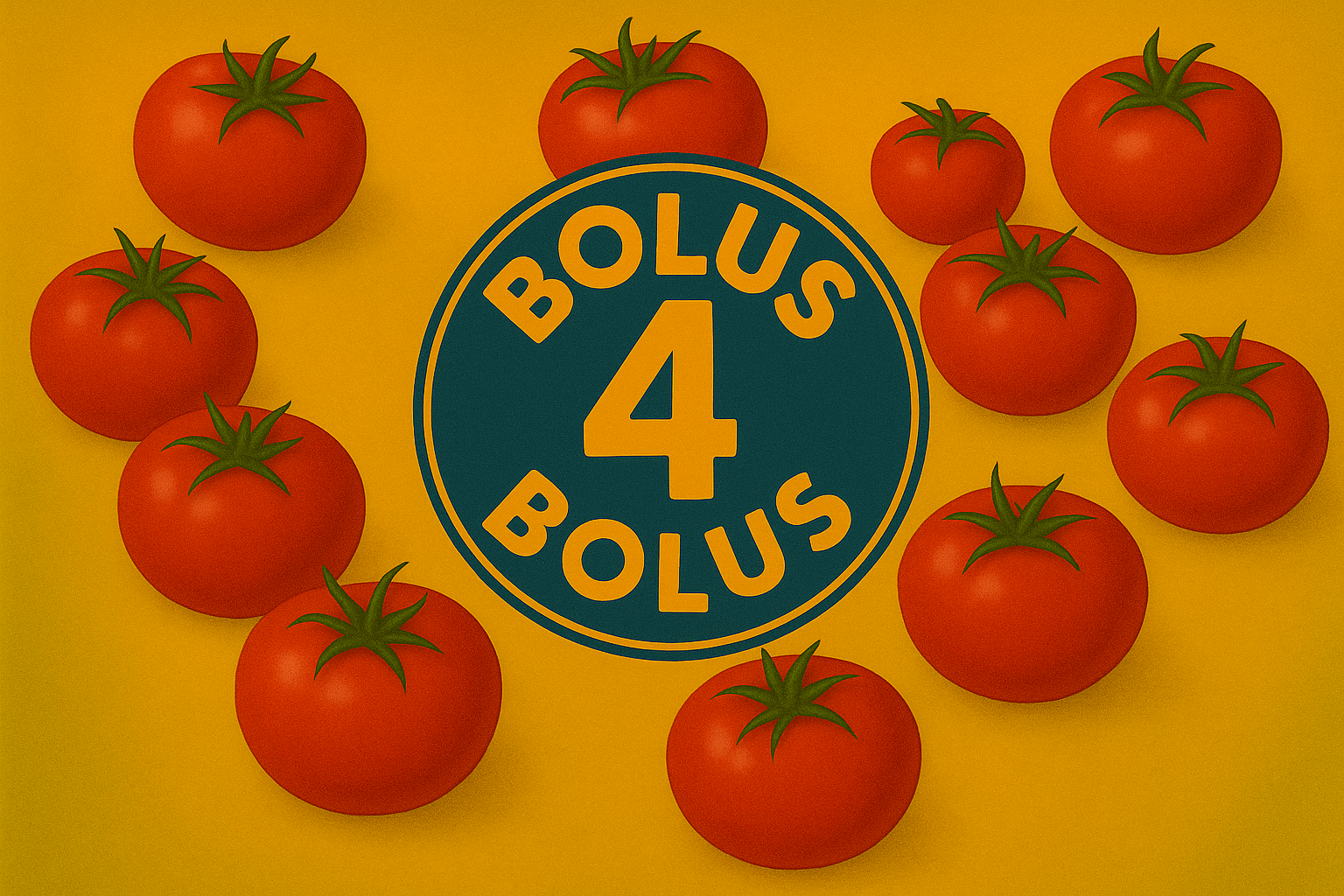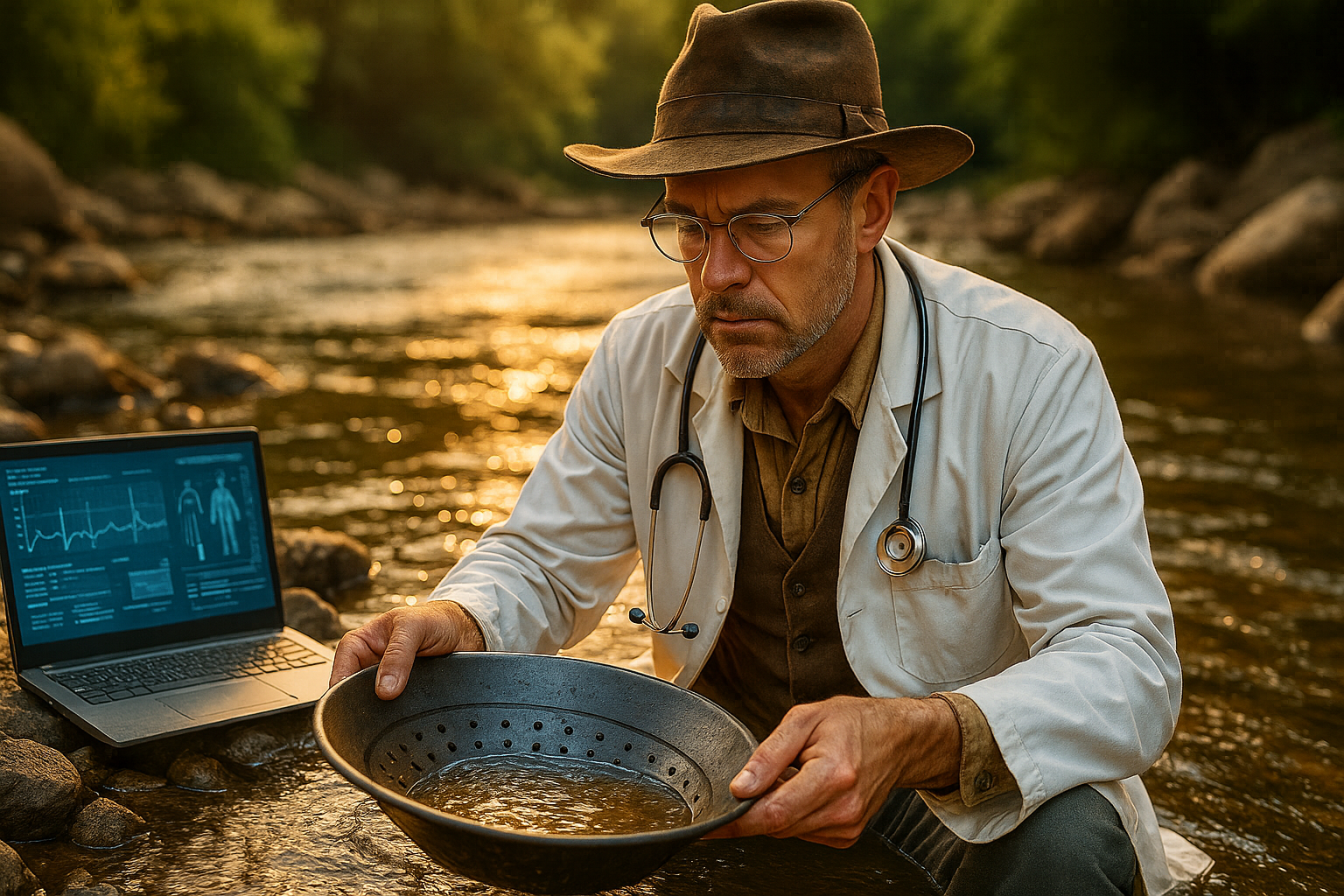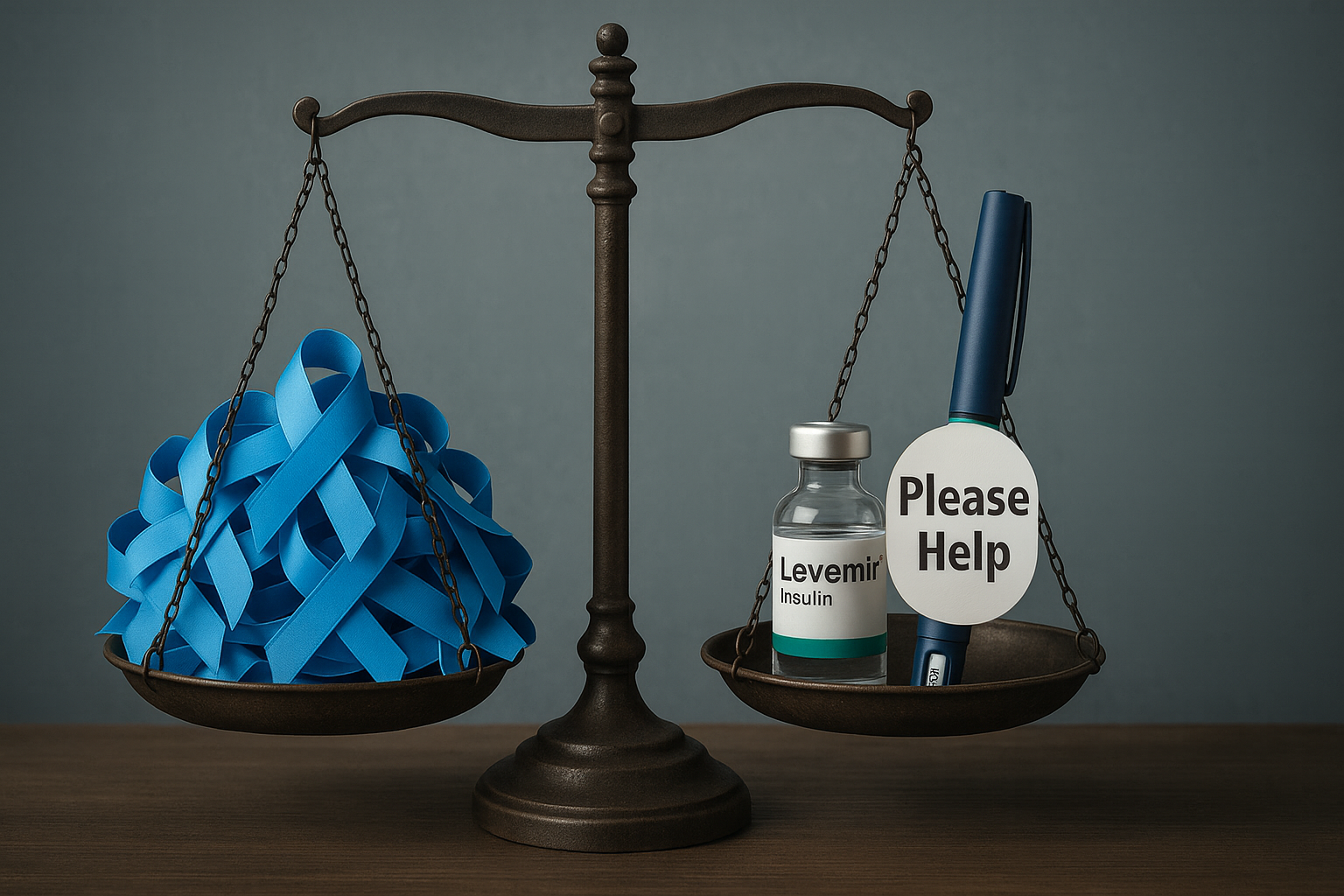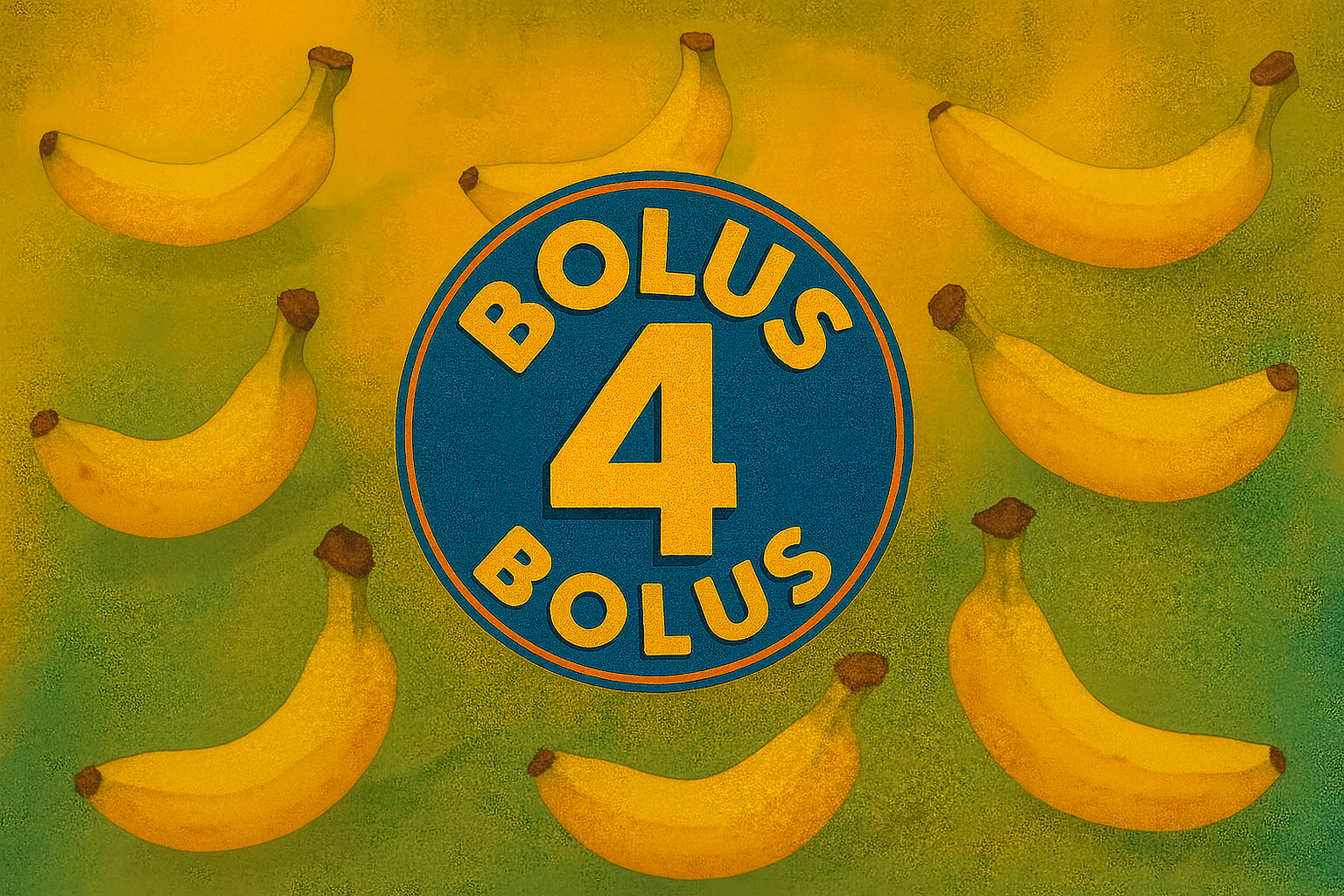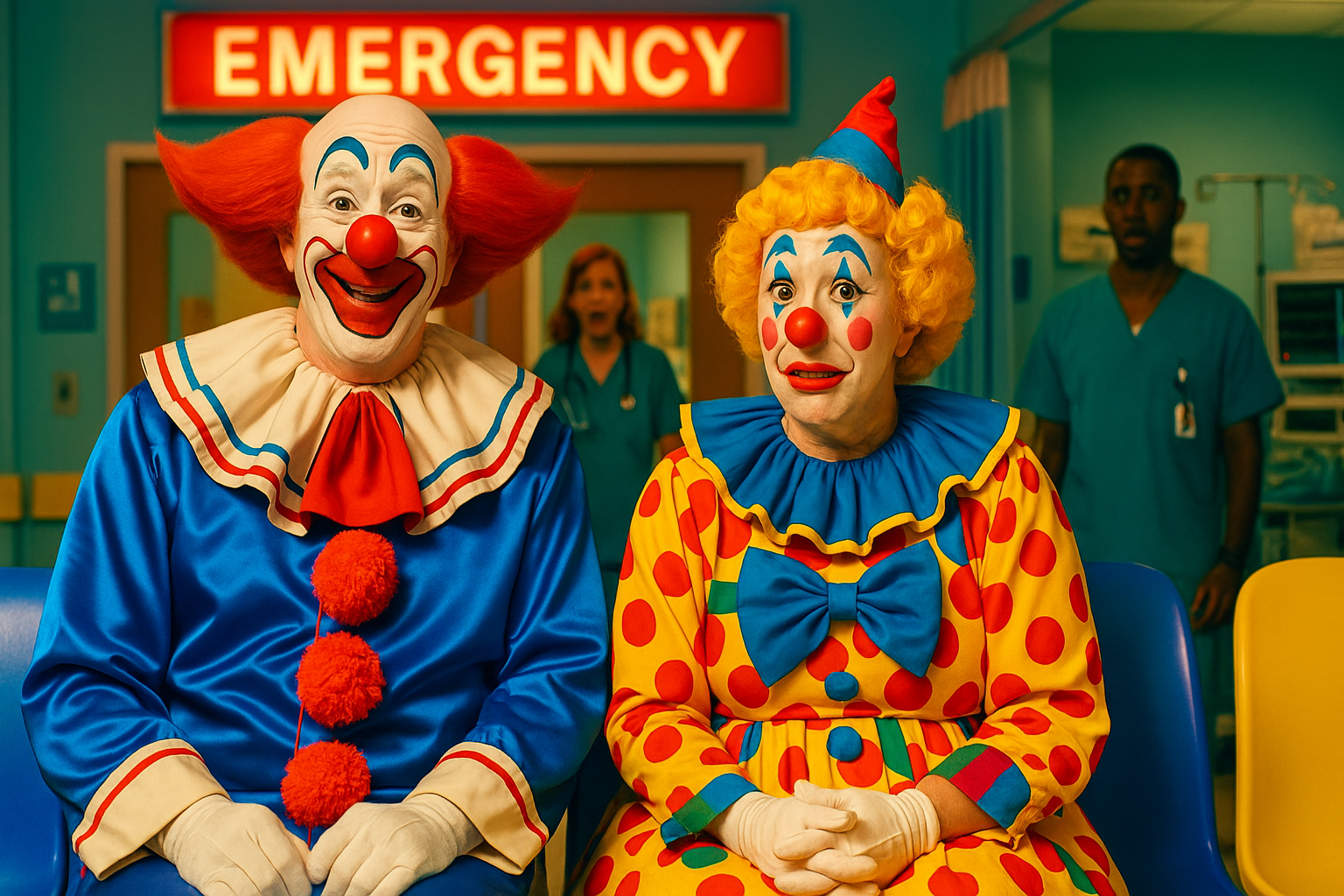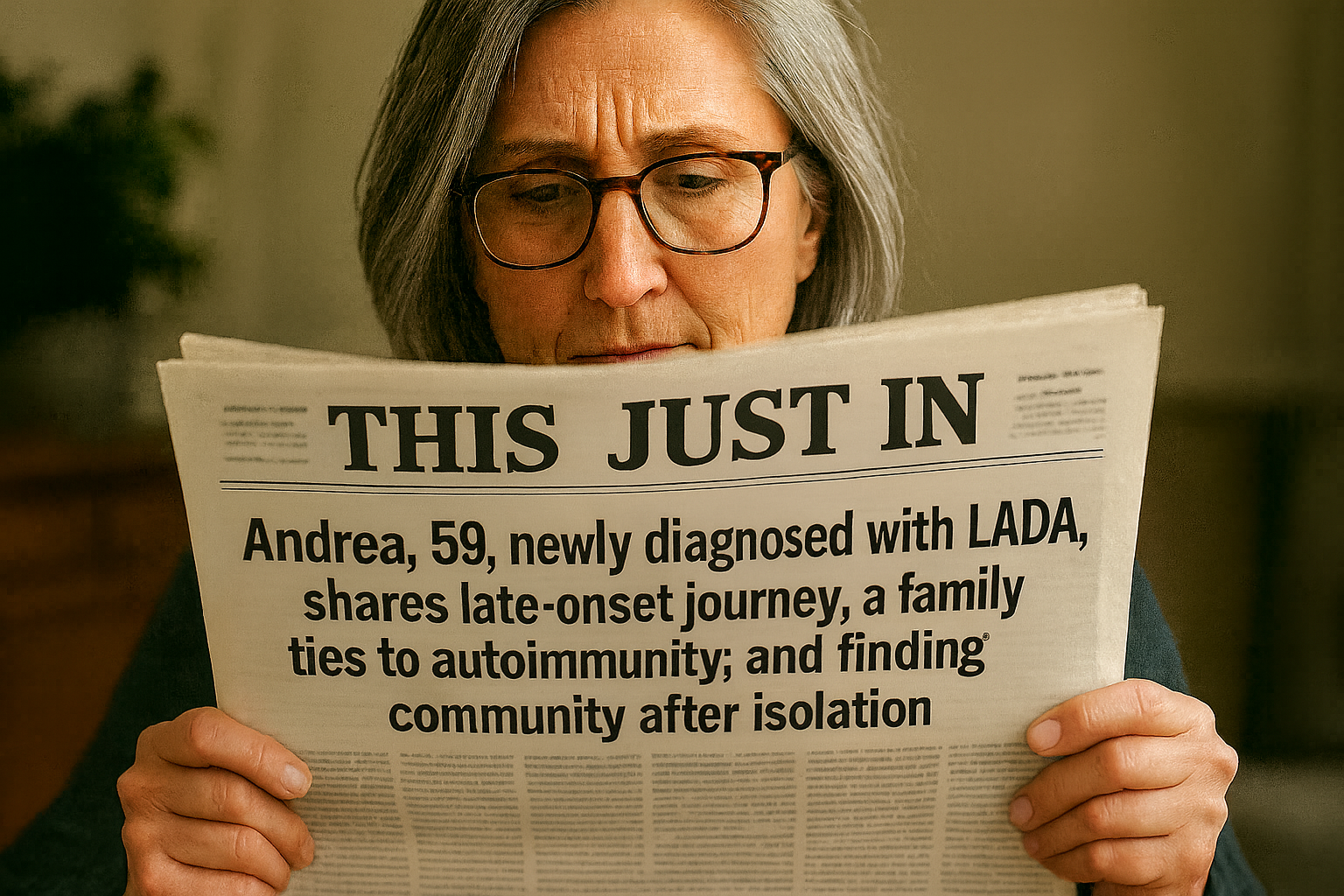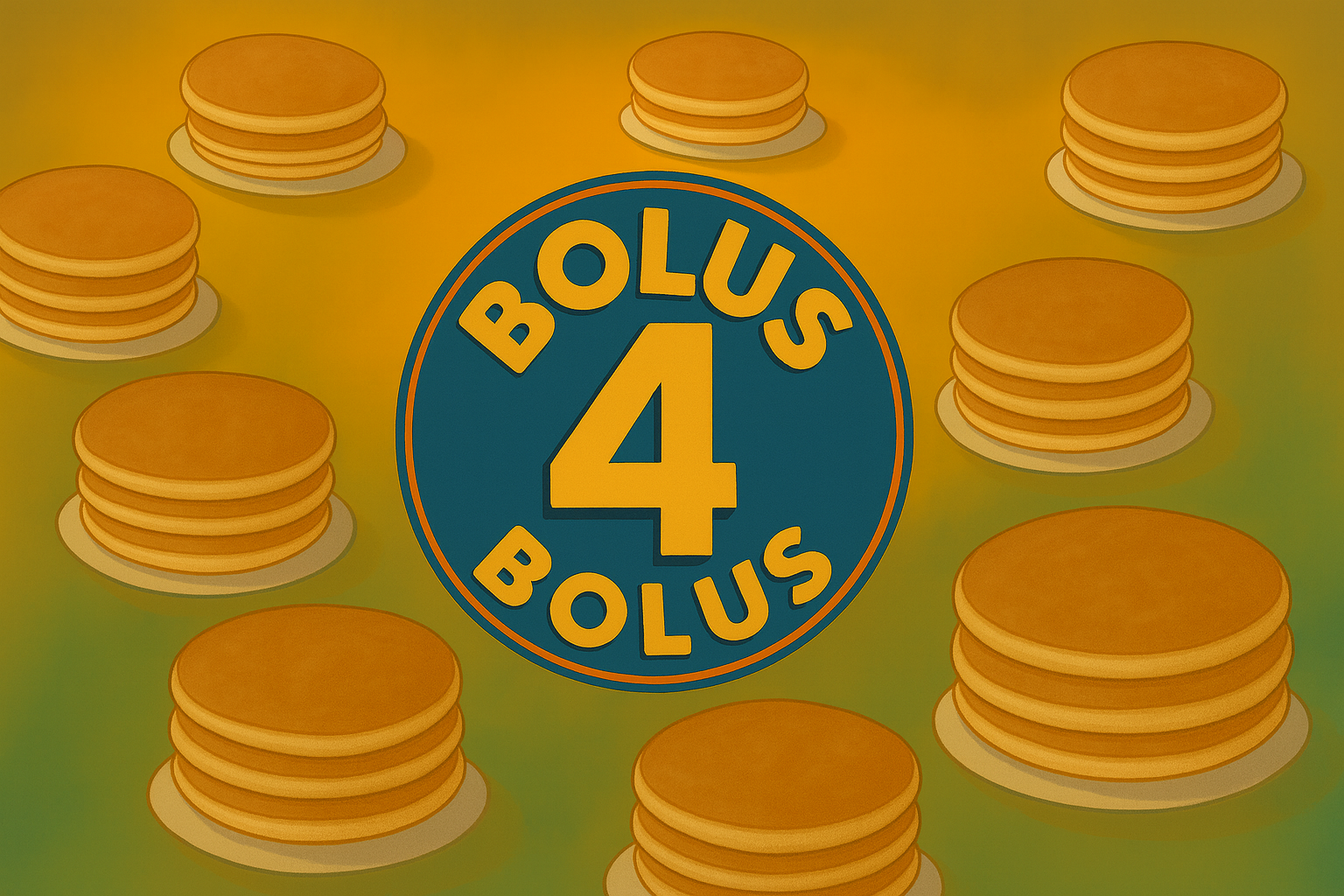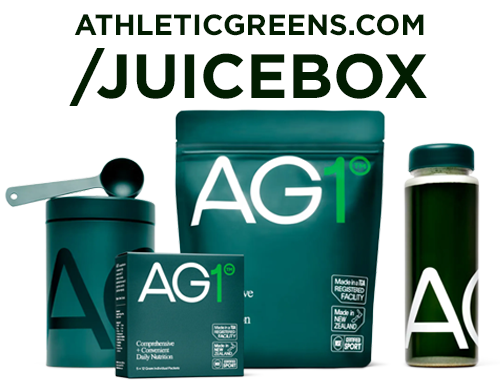#820 The Math Behind Setting Basal Insulin
Scott and Jenny break down the math behind setting your basal insulin. I really wanted to call this the GOZINTAs of Basal.
You can always listen to the Juicebox Podcast here but the cool kids use: Apple Podcasts/iOS - Spotify - Amazon Music - Google Play/Android - iHeart Radio - Radio Public, Amazon Alexa or wherever they get audio.
+ Click for EPISODE TRANSCRIPT
DISCLAIMER: This text is the output of AI based transcribing from an audio recording. Although the transcription is largely accurate, in some cases it is incomplete or inaccurate due to inaudible passages or transcription errors and should not be treated as an authoritative record. Nothing that you read here constitutes advice medical or otherwise. Always consult with a healthcare professional before making changes to a healthcare plan.
Scott Benner 0:00
Hello friends, and welcome to episode 820 of the Juicebox Podcast.
In today's episode, Jenny Smith and I will be talking about the math behind figuring out a Basal rate. While you're listening today, please remember a few things first, nothing you hear on the Juicebox Podcast should be considered advice, medical or otherwise, always consult a physician before making any changes to your health care plan are becoming bold with insulin. Remember this as well. This is Episode 820, episode 821. And episode 822. Go together with this one. You're going to learn about basil in this episode, in Episode A 21. We're going to talk about insulin to carb ratios and how to get them set up. And then, in the last episode, insulin sensitivity, these three settings are huge and will help you in every aspect of your diabetes care. Listen to the end of all three episodes, for hints about what other episodes of the podcast will build on what you've heard today. If you're a US resident who has type one, or is the caregiver of someone with type one, please head to T one D exchange.org. Forward slash juice box and fill out the survey completely. When you do. You're helping to move type one diabetes research forward without ever leaving your home. T one D exchange.org. Forward slash juice box. This show is sponsored today by the glucagon that my daughter carries G voc hypo pen. Find out more at G voc glucagon.com. Forward slash juicebox. Today's episode of The Juicebox Podcast is also sponsored by Dexcom, makers of the Dexcom G six and Dexcom G seven continuous glucose monitors, get started today, learn more or see if you're eligible for a free 10 day trial of the Dexcom g six@dexcom.com. Forward slash juice box. I've been asked, Can you just tell me what the math is for setting up my Basal insulin for setting up my insulin to carb ratio for setting up my insulin sensitivity? And I don't know why we've just never gotten around to it probably because I have an aversion to math. But as you pointed out right before we started recording, yes, there's math here. But there's also other things to understand. So Right.
Jennifer Smith, CDE 2:33
And I, you know, I think as I said before, it is it's a lot to do with the fact that I would say to the newer people on insulin, I think many people just end up tweaking from where they're currently at. And once they've started learning more about how to adjust their overall insulin. Unless they really are the more I guess, precise, for lack of a better word. I just want to know why I need this much insulin and how to adjust it with a math equation. Many people just, ah, looks like I need a little more I'll add a little more heat. Like I need a little bit less, I'll take a little bit away. And there's not much math that they're considering. They're just adjusting,
Scott Benner 3:21
right? Yeah. And they also don't know where to start sometimes, like where to begin, because we all leave a doctor's office with I guess my assumption is the doctor uses these equations to come up with something for you to get you started to get you close enough, right baseline. Yes. But nobody's telling you that when you're leaving the office, they're not they're not saying to you hey, I made your basil point eight an hour because you know what we're going to talk about now? Yes, absolutely. But but then you get home, and it works or doesn't work. If you come up a few come along this podcast, you're going to hear an episode about setting Basal insulin that's, you know, basically me saying, use a little more if you're if your blood sugar has been high, and use a little less in these situations where you come along and clarify a little bit. And but people are asking for like, where do I really start? So I guess going to basil first? How does your Basal insulin get set on day one, you just were diagnosed and you're sitting in the office and someone's giving you either an amount to inject or an amount to put into your pump probably to inject right so where does that come from?
Jennifer Smith, CDE 4:27
Well in initially it will come from just weight, your body weight, truly just your body weight and some doctors do a 5050 they calculate total insulin estimated need based on your body weight. And then they'll say okay, well 50% of this or so should come from your basil and the other 50% should come from your Bolus insulin and so they work out the math that way right. And in general, some some may set you up by actually asking a little bit more, are you a really active person? Are you really sedentary person, what is your age, you know, as you go through different stages of your life, your insulin needs will shift and change, you may be more insulin sensitive, you may be more insulin resistant at certain points in time. So, if they're doing a really awesome job for you in estimating this initial dosing, besides your weight, they may also factor in your activity level, right. And then in terms of the life, right, the stage of life that you're in, you may be in need of more insulin or less insulin just based on your age, right. So a certain amount of total insulin goes in based on whether you're five years old versus 65 years old, in general.
Scott Benner 5:50
See already, this is this for people listening, this is why there's not just a, here's the math of setting your Basal insulin, because there's so much that goes into it. You just said depending on your age, it's also a lot of that is where you are in your life. You know, people might not understand that, you know, once you get past the honeymoon stage, and your Basal needs, or your excuse me, your insulin needs are pretty stabilized. Right? As a young person, they might be very stable, right up until you get to where you're starting to see hormones in your life. And then that goes crazy. And then your hormones might stabilize. But some of you, for some of you it might not like some women might struggle with hormonal problems, you know, for decades, where there's a lot of fluctuation and then correct, you know, it's just there's so much happening.
Jennifer Smith, CDE 6:39
And in terms of the, you know, the direct math, I guess a good example is that much of much of medical math is based on kilogram weight. And here in the US, we use pounds, right? So to find your weight in kilograms, all you really have to do is take your weight in pounds and divide it by 2.2. And then you have your weight in kilograms, okay? I won't make you figure out your weight in kilograms for everybody to know,
Scott Benner 7:02
I'm not telling anybody my weight, I'm gonna just take 100 pounds in kilograms, so I have somewhere to go from.
Jennifer Smith, CDE 7:09
So you might be like a middle school, or let's say, if you're 100 pounds, give or take, right? That's just an estimate. So you divide that by 2.2. So the 100 pound person of some age is about 45 kilograms, right? And so if you're figuring out let's say, you've got a 45 kilogram or 100 pound kid, right? If they are inactive, that kid could have insulin needs total daily insulin needs of anywhere between like, point six to like, one 1.2 per units per kilogram. Okay? Right. So I mean, and that's a big range, right? That's a big range. Do you need point six units per kilogram if you're 45 kilograms, or all the way up to like one unit per kilogram, and again, this is total daily dose. This is both Basal and Bolus. So right together, I've
Scott Benner 8:06
gotten out a calculator. So your example, point six would then be times 45 kilograms, which 27 units a day,
Jennifer Smith, CDE 8:15
total exam, this is inactive, right? This is like an inactive kid, right? If you have the kid who is entirely like, I do two hours of soccer four times a week, and then a tournament every weekend, that's like four, you got a busy kid. So anytime activity level, most often I should say anytime activity level goes up, you're metabolically using food better, your body is responding better, from the muscle level to the insulin doses. So your insulin sensitivity is going to increase, which means that your doses decrease. Yeah. Right. So a really, really heavily active kid, same way it is, you know, going to need somewhere, let's say between point four 2.8.
Scott Benner 9:05
Okay, so interesting, because we said half of it right at point six for the inactive kid, you're 27 But one, you're 45 for that inactive get. So you could be somewhere between 27 total units a day split between Basal and Bolus and 45 for the inactive 100 pounder. But for a more active one, you're saying more like point four.
Jennifer Smith, CDE 9:26
Right? About 3.8
Scott Benner 9:29
Yeah, so that goes from like 18 to sorry, I'm clicking, doing the math. Yeah. 36 I
Jennifer Smith, CDE 9:37
just don't want to get upset I got my calculator out for you. I could have done it.
Scott Benner 9:40
I just realized I don't own a calculator. So I like the computer has one. But But I didn't want to like I don't want to I don't want to say the wrong numbers over and over again and people be like, Okay, so there's a huge swing, like there is so on the on the high end for that active 100 pounder you're at like 36 but on the high end for an inactive person, you can be up to as much as four 45 or 35 is a lot more insulin,
Jennifer Smith, CDE 10:02
right? So and then it changes based on stage in life, right? Then we've got adolescence, then we've got like more like adult age, and then we've also got older adults, right? So you can see where the math isn't a direct. If you're this age, or this weight specifically, you're just going to need this amount of insulin. And I hear that question often when I work with people. And also I see that question come up a lot in all of the online communities. It's like, well, how you know, Mike, my kid is seven years old. How much insulin does your seven year old use? That's, that's not purposeful. Right? Right. That's not going to help you figure out your seven year olds insulin need, yeah.
Scott Benner 10:44
Also, we just use the example of activity. But you could also use another variable and say, you know, I don't know what if in the household. Here's one, what if there's somebody in the household who has celiac, and you're using gluten free, which oftentimes has more carbs in it, you can be in a car beer situation? What if you're somebody who stops at McDonald's four times a week versus somebody who's, you know, having salads and, you know, a small piece of chicken with, you know, like that kind of thing? Correct?
Jennifer Smith, CDE 11:14
Right, right. Absolutely. So then you're going to, again, from a comparison standpoint, you're looking at total insulin, in a known situation, a very different intake of food, maybe activity level. And also, then the insulin doses are going to be very, very different. Okay, so comparison wise, again, that's why I think this is important to know, like, where did the math come from? Where is a good place that if you're trying to redo things, it could be a starting point? I mean, there are certainly, could you Google it, you certainly could, but I think you're gonna get a lot less directive information. There are a couple of really good books that have charts and everything already set for you to read and manually sort of figure it out. I mean, John Walsh's pumping insulin book is a really good reference to think like a pancreas book. They're, they're awesome in terms of like, this is the math, this is how to sit down and figure it out if you really wanted to, but sometimes they think it's nice to have somebody sort of walk you through
Scott Benner 12:20
it a little bit, instead of looking at the graph and thinking I want to do something wrong here, right, come up. That's got to be someone's fears that I'm going to do. I'm going to do my guest sentence, and then I'm going to use way, way too much insulin. Right, right. Yeah.
Jennifer Smith, CDE 12:35
And I think that actually brings up a good point, actually, that, especially for those newer diagnosed who may be questioning the math and or seeing shifts in their insulin need already and wondering, well, my doctor is telling me to shift it this way. Most often, they're, they're erring on the side of caution and shifting your insulin for you, right. So you may be seeing numbers that aren't necessarily where you really would like them to be, or where you've learned that many people are getting their numbers to be. They're airing, you know, clinically, they're erring on the side of the lower amount before they get some data to show that they can increase safely,
Scott Benner 13:18
right? Because imagine if you are using point six an hour, let's do that for people point six times 24. So you're on a pump, or you're shooting it, I guess. So point six an hour if you're pumping, or it would be 14 and a half units a day if you were shooting it. But that's just basil. That's just basil we're talking about for a second. But you let's say it should be a unit. But instead it's point six. So you should have 24, but you're using 14, and then your blood sugars are high and your meals are spiking. And you start and that coming down. Yeah. And then you start seeing ghosts, which I talked about a lot. Like you know, my example here would be if the doctor told you look, your basil is point six, but really it should be one. Now you're deficient point for an hour of basil. Then you come along and Bolus something your blood sugar goes up. And you think, Oh, my insulin to carb ratio is wrong, but it might not be your insulin to carb ratio might be right, your Basal insulin is wrong. Right. And for every unit you're shooting for food, point four of it is really kind of just going to cover loss Basal because you're right or wrong, right? Correct.
Jennifer Smith, CDE 14:25
So from a from a Basal only standpoint, if you you know, that initial equation was really for figuring what on average should my total daily truly be daily being everything basil Bolus is corrections, everything in the mix. If you really just want the math for doing kind of same example, like a young inactive kid, just Basal dosing is going to be somewhere around point 2.25 upwards of maybe point six. Again, per kilogram of body weight. So that'll break it down a little bit further so that you can just say, okay, my kids getting this much. They're about in that bracket. They're not very active. This is about right. If however, like you just said, you're constantly noticing, well, gosh, we never really get down despite all the work that we're doing. And you plug in the equation, you're like, Well, gosh, maybe we're deficient in basil. You know, the equation is here. We're kind of under that by a unit or two, we'll maybe you could nudge it up a little bit and then be able to see whether that's working.
Scott Benner 15:39
What if I'm a 200 pound grown person? And I got diagnosed yesterday and I'm six three or whatever.
Jennifer Smith, CDE 15:47
And are you Are you pretty active or are you just moderately active Are you just kind of a couch potato? What would you like to be?
Scott Benner 16:00
G vo Capo pen has no visible needle, and is a pre mixed auto injector of glucagon for treatment of very low blood sugar. In adults and kids with diabetes ages two and above. Find out more go to G vo glucagon.com forward slash juicebox G voc shouldn't be used in patients with insulinoma or pheochromocytoma. Visit G voc glucagon.com/risk. You can make knowledge your superpower with a Dexcom CGM, the Dexcom G six can help you to make better diabetes treatment and management decisions. The Dexcom lets you see your glucose numbers, or your child's glucose numbers. With just a quick glance at your smart device or Dexcom receiver get alerted when your glucose levels are heading higher low and share your data with up to 10 followers. The Dexcom G six is covered by most insurance plans. So why don't you head over now to dexcom.com forward slash juice box to get started with the Dexcom. While you're there, you may be offered a free 10 day trial, the Dexcom G six if you get that offer, I try it if I was you free 10 days, that's a that's pretty cool. I am looking at my daughter's blood sugar right now. It's 70 We're about to eat, and her blood sugar feels like it's in a good place. This data we have right now this visual of what her blood sugar has been doing all day and in the last 30 minutes. And whatever else you want to look at, it's going to help us to make a great Bolus for a meal. And to watch for spikes, lows and everything else. The Dexcom is going to give you alarms, wherever you want them to be at Rs go off at 70 and 120 years, maybe somewhere different. You decide how to set up your Dexcom dexcom.com forward slash juice box, you will not make a better decision today than going to that link. There are links in the show notes of the podcast player you're listening in right now. And links at juicebox podcast.com to Dexcom, Chivo, hypo pan, and all of the sponsors. When you click on one of my links, you're helping to support the show and to keep it plentiful and free for its listeners. So if you're gonna get this stuff, just please give us give us a little clip, click on those links.
Jennifer Smith, CDE 18:21
Kind of the couch potato What would you like to be
Scott Benner 18:25
this feels like an attack Jenny? Not I mean, how about just how about a person that gets up in the morning and goes to a job and probably gets around 8000 steps a day and you know, gets the gym twice a week? You know that twice a week?
Jennifer Smith, CDE 18:39
Sure. Yeah, I mean that I mean, I would call that at least mild to moderately active. Honestly, you're getting a good number of steps more than just the daily activity of 5000. Right. So again, an adult fully grown, no more growth hormone kind of stuff happening somewhere between point two to point five per kilogram of body weight and that's just Basal.
Scott Benner 19:02
Okay, so it can be somewhere point two times 90 kilograms already did the kilogram now. You did the weight. Thank you. 18. It's up 2.5 times the 9045. And that's a total daily insulin. No, that's basil. Excuse me. Yep, that's just Basal literally. Yep, you have the word basil six times in front of me. And so again, there's a big swing right at 45. It's, you know, I imagine always like parents thinking about 45 units in a syringe, and they're probably just like, wait, what?
Jennifer Smith, CDE 19:37
Right? Many, many people in a syringe now may actually only have the 30 cc or the 30 unit syringes. So they may think, Well, gosh, my syringe does the amount of insulin I need to take at one time
Scott Benner 19:53
right? Yeah, I just did the math there for the for the larger amount, and even in a pump split up over You know, 24 separate hours? It's 1.8 an hour. Correct? Right?
Jennifer Smith, CDE 20:04
Which could be I mean, when you talk about like, that seems like a lot. But gosh, if you look at what do you think the heaviest age group for insulin needs is?
Scott Benner 20:14
My guess. Oh, gosh, what? What do I think the heaviest group is? Girls who get their periods? In the beginning? I don't know. 15 or 1430? Yeah, adolescents, right,
Jennifer Smith, CDE 20:27
that teen preteen upwards into maybe even early college, right? And really their needs in an inactive state? Or let's call it moderately active. I don't even know what moderately active is for a team these days. Like, what are you doing? It's,
Scott Benner 20:48
it's your finger moving very quickly.
Jennifer Smith, CDE 20:50
Right? Yeah, exactly. So really inactive, let's say somewhere between for adolescents, somewhere between point three and point, it's about one ish. If you're moderately active, like you go to gym a couple of times a week or PE, right. You may bike down to the mall or whatever with your friends, again, so far outside of that age range, but it's like point three, like point seven with some activity. So you can see that the more active you get, the lower overall your insulin needs will be because you're metabolically able to be more sensitive to using and your body using seeing and responding to insulin, better to give
Scott Benner 21:33
a little focus for people like That's why if you are a person who's moderately active, and you have all your insulin set well, and then you decide on Saturday afternoon, you're gonna go play basketball, and an hour into it, you're looking at a stranger going, there's juice in my bag, like, right, yeah, I have helped me, that's going to be because you were set up as an in a more inactive person who suddenly got very active and your settings, you didn't change your settings to go play basketball. Right.
Jennifer Smith, CDE 22:05
So and I think that brings in and of itself a really good point. Like, if you went and did that, like once a week, you're most likely still going to be only moderately active, whereas, and your insulin needs for that day may shift. Yeah, or maybe into the next day, maybe 36, even 48 hours of reaping the benefit of that high activity. But that doesn't mean your overall settings need to be adjusted. Right? Yeah, that's applying another factor. Right?
Scott Benner 22:34
Right. That's just the point of, you know, what stable can look like, right until you throw a variable into the mix.
Jennifer Smith, CDE 22:40
Right. So But over time, if you added more consistently, like you joined, you know, the basketball team and you're practicing a couple of nights a week and you're doing that, like rec league, or whatever, on the weekends or tournaments. Now, over time, you're metabolically going to become more sensitive, your insulin needs may come down. And I see that with a lot of the teams that I work with, you know, in the season versus the offseason shifts in need can happen in a very considerable way.
Scott Benner 23:11
So to make this episode valuable for anybody who trips over it, whether they have a kid, I don't know. Like also, does this count when you're honeymooning, nothing counts when you're honeymooning. Right. Yeah. Does it?
Jennifer Smith, CDE 23:24
Does it count? I think from an from a place of analysis, you can see where are you and as you become more sensitive, because your body is still helping you or has increased if the help that it's giving you in that time period, then some of this math may definitely go out the window. I mean, we've had, you know, many kiddos who can just use a Basal insulin of one unit a day and they're not even bolusing. Yeah. Right. So then, yeah, so then as the math will not be helpful, but
Scott Benner 23:57
as needs shift, you can redo the math and then look at the range and and say, Oh, well, I'm already at the low part of the range. It doesn't seem to be enough. And you can see at least where, at least I guess my point is if you're at point five and point fives not working, but you know, your range based on the math might be point five to I don't know, one, that at least you because some people were like, I don't know how far to turn it. Like I want to give more right, but I don't know, is it point five to three? No, it's not.
Jennifer Smith, CDE 24:25
Yes, no, no, no,
Scott Benner 24:26
no. It's hard to put yourself back into the position of a person who has no earthly idea what they're talking about, you know, because it's hard to know where to go. But okay, so maybe you're honeymooning and you'll be on the on the cautious side, you'll see your needs change. You'll do the math and you're just within the range. But But is this is this episode good for somebody whether they're eight or and just found the podcast. I've had diabetes two years where they're 15 or the 35. Or they're 60 Like this. It works for everybody. Yes, that's it. Okay. Say it one more time. For me, just the math. Just the math. Yeah.
Jennifer Smith, CDE 25:03
Okay. The total daily dose or just the Basal
Scott Benner 25:08
start over Jenny, I walk into the room. I'm like, Jennifer, I need your help setting my Basal insulin. Hi, I'm Scott. I'm 30 years old. I weigh 180 pounds. What do I do?
Jennifer Smith, CDE 25:20
Yeah, so 180 pounds. I'm sure you probably all did already did the math on your fancy computer. You wanted a half kilograms. They are at one and a half kilograms. And we're going to essentially take that you said you're 30 years old, right there and take 81 and your age is 30. And, Scott, how active are you?
Scott Benner 25:39
I have to be honest, Jenny. I've been watching. I've been watching Battlestar Galactica on Sci Fi. I'm Monday, I'm going to season five. And I'm going right from that to Yellowstone. So I'm not doing much.
Jennifer Smith, CDE 25:49
I'm sitting right. And on your side time you're doing a podcast. Yes, I
Scott Benner 25:53
sit when I work, and I sit when I'm enjoying myself. And I eat I eat well, though, I don't eat a lot, I don't eat a lot of junk food. I don't have any, I don't have any processed oils, I stay away from processed food. I eat protein, not a ton of carbs, maybe candy once in a while. Okay,
Jennifer Smith, CDE 26:12
so your overall inactive, age wise kind of were is a nice age to be. So we're really looking at taking your kilogram weight 81 kilograms. And you're going to multiply that if we want to start with just a total daily sort of estimate of where your insulin needs to be. In an inactive adult, you're looking at about point five to about 1.2 point 5.6 up to about 1.2 units per kilogram. And again, this is your total insulin needed in a day.
Scott Benner 26:45
So I'm at 40 and a half. Okay, point five,
Jennifer Smith, CDE 26:49
of which about about half give or take, again, based on an inactive level is going to be basil. Okay? Now, if you really want, you know, dosing strategy just for basil, and then when we talk again, we can see how well that's working for you, then we kind of start with just looking at Basal insulin needs. And from an again, inactive adult gotta get to doing more than Battlestar Galactica or whatever it
Scott Benner 27:13
was it while I'm thinking about going for a walk,
Jennifer Smith, CDE 27:17
you're thinking about going for a walk. Okay. So that would add in some mild activity, but I would still start you on somewhere between point two, five all the way up to maybe point six units per kilogram, and this is going to be just your Basal insulin needs. So if we took, let's say, say middle ground in between there, point four units, okay. So you take your 81 kilograms times point four, gives you about 30 to 32.7. So let's say 33 units of just Basal insulin a day.
Scott Benner 27:49
Okay. All right. So if I'm shooting it, I'm shooting that much. Does it matter if I'm shooting to SIBO? Or Lantis? Or no? Okay, no. And if I'm on a pump, I'm going to divide that number by 24. And make my Basal rate about 1.35. an hour?
Jennifer Smith, CDE 28:04
Yes, good math. Absolutely. Okay.
Scott Benner 28:07
But so is the chart really the important part? Like I know, you mentioned that there are a couple of books there. So I'm putting like, put yourself in the, like, this episode will be downloaded just 10s of 1000s of times. And it's going to be by everybody in every age, and they're going to hear it overall. But where did so where did they go to start? So now I can't tell you how much they weigh, or how old they are. But what should they do?
Jennifer Smith, CDE 28:32
Right? I think honestly, then if they're looking for the math, the books would be a good if they'd be a definite advantage. Because then the charts are, they're very easy to look at that you can say, Okay, I've got a kid who is not like pre puberty or even puberty, they are a kid, my kid is moderately active. And I can look at what should the math figure out to be knowing how to determine what they are in kilograms versus their pound weight. All they have to do is look at the chart and do the math and say, okay, my kid is right here. It looks like we're in this range. And my kid is still sitting high. So that's where then you have to take it a little further. And you have to look at the data from what if you're using a CGM, that's most advantageous. Obviously, you have the most in terms of trends. You can say, we want to nudge this down. It looks like we're staying high no matter what, right? We're not terribly floxie Up and down. But we've got some stability just at a higher level than we want to be. And what we've been using for Bolus is doesn't ever seem to get us to come back down. Right. So could it be Basal it could be could it also be that the Bolus ratios just are not working heavy, heavy enough either. Because remembering that our Bolus doses when we take them are really what's supposed to get us back down to the target that we're aiming for. And it's So if the Bolus is aren't doing that, despite doing some basil testing, and when you're using whether you're using MDI, or you're using a pump, you can do some base Basal testing to evaluate stability. Because remembering that Basal insulin supposed to hold you where you are, and not allow you to drop or rise more than about, let's call it 20 ish points. So if that's the case, and you're holding stable, maybe that's because that's where your Bolus has left you off.
Scott Benner 30:30
I have to I have two big questions. Yeah. These charts? Are they like copyrighted information? Like if we posted them on my like, I'd have a look at that right on my web, I think stealing from somebody if we put it up because I could make a webpage, where this episode sits along with the chart and the math right now.
Jennifer Smith, CDE 30:52
And the math written out? Yeah, I'd have to look in the I'd have to look in my books to see whether or not underneath the charts that are in both of the ones that I have. Again, both John Walsh's and then Gary's book, both of them have charts. I don't know if they have a specific,
Unknown Speaker 31:11
you know, horse
Jennifer Smith, CDE 31:12
noted,
Scott Benner 31:13
like, is something that isn't something that Gary sat down was like, I'm gonna figure this out on my own, or is it something that the world knew when he put it in there?
Jennifer Smith, CDE 31:20
No, that's definitely not I mean, it's not like Gary or John sat down and was like, these are definite used. They're used charts. Right. This is what a peds. This is what an endo may or could potentially look, look at. So the math is a set math kind of rule. Well, no, it's not. It's not their work.
Scott Benner 31:44
Okay, well, then I'm going to just put it down. I am going to make a web page that goes along with this episode, then. Sure, I'm probably gonna ask you for help. So
Jennifer Smith, CDE 31:53
I'm happy to help you.
Scott Benner 31:54
Here's my last question. I'm a person that have had diabetes forever. And I'm hearing this episode and thinking, God, is my basil wrong? Do I just take my total daily insulin go over what I've heard and take a look and see like, oh, maybe my basil isn't right. Like, because? Because it does happen, right, that people get set up one way. And then you just sort of you, I think it's very common for people to get to the right answer the wrong way. In a lot of facets of life, diabetes is an example. So say, one day, 10 years ago, I know it sounds crazy, but 10 years ago, a doctor put you on a Basal insulin, and he gave you too little, and your blood sugars were high, but you found ways around it with, you know, corrections or that. And eventually, it just works for you. It doesn't mean your settings are right, it means that you found a way to work with bad settings. Right. Right. So it's not it is worth going back and looking at a little bit.
Jennifer Smith, CDE 32:53
It is absolutely because as you said, you know, if you really think something is off, I mean, you can go back to what we've talked about in the pro tips, which are all about testing your insulin factors, right? The first one being basil, because that's, that's supposed to be your foundation, it's supposed to hold you really nice and stable. If you just decided all day long. Today, I'm going to fast or it is your fasting time of the year or whatever it might be, you should be confident that your basil is doing a good job. And Could your basil change? Absolutely based on some of the variables that we've already talked about, you've added in exercise, or you've now got a really active job when you used to have a very sedentary job, that could all factor in and you may need a
Scott Benner 33:40
shift. I'll just say it here again, if your basil is wrong, nothing else works. And you really should go find the Pro Tip series and listen to it because I think you would have a better idea of how to use your insulin. Right. Well, thank you very much. I appreciate Of course, yes. A huge thank you to one of today's sponsors, G voc glucagon, find out more about Chivo Capo pen at G Vogue glucagon.com forward slash juicebox. You spell that g VOKEGLUC. Ag o n.com. Forward slash juicebox. Thanks also to Dexcom, makers of the Dexcom G six and that Dexcom G seven that's coming just any day here in the United States. It's already available in Europe dexcom.com forward slash juice box, see if you're eligible for a free 10 day trial of the Dexcom G six. All right, I want to thank you for listening here, but after the music, I'm going to tell you about some other episodes that will help you with your Basal insulin.
Before I tell you about those other episodes, I want you to know that the chart that Jenny and I spoke about is that juicebox podcast.com forward slash Basal if you're new to diabetes, Nice, you should check out the bolt beginning series that's available at juicebox podcast.com. Go to the top, click on bold beginnings, or by looking in your podcast player for bold beginnings. Use that search function. If you're not so new to everything, you may be looking for the diabetes Pro Tip series. These are again available in your audio app, whichever, wherever you're listening right now, or at juicebox podcast.com. But if you just want to drill down on Basal insulin, find episode 237. It's all about basil, and it's part of the Pro Tip series. If all this is too confusing, just go to Google and type in juice box, one word, podcast, Basal. And all this will come back and return. On top of all that, there are lists of all the series available in the private Facebook group in the featured tab. So that's juicebox podcast.com In the private Facebook group under the feature tab, or in any audio app that you want to listen in, this information is here for you. I hope you get your Basal set well. It is really the core of your diabetes care. And don't forget to go to Episode 821 and 822. To figure out insulin to carb ratio, and insulin sensitivity factor these three settings together, they're going to make a big difference for you. Last thing is I just really can't recommend enough that you take the time to listen to the diabetes Pro Tip series. If you're looking for stable a one sees less variability, overall greater health. The diabetes Pro Tip series from the Juicebox Podcast will help you thank you so much for listening. I'll be back very soon with another episode of The Juicebox Podcast.
To caclulate Basal/background insulin dose take Total Daily Insulin Requirement(in units of insulin) = Weight in Pounds ÷ 4
Total Daily Insulin Requirement (in units of insulin) = 0.55 X Total Weight in Kilograms
Basal/background Insulin Dose = 40-50% of Total Daily Insulin Dose
Please support the sponsors
The Juicebox Podcast is a free show, but if you'd like to support the podcast directly, you can make a gift here. Recent donations were used to pay for podcast hosting fees. Thank you to all who have sent 5, 10 and 20 dollars!

